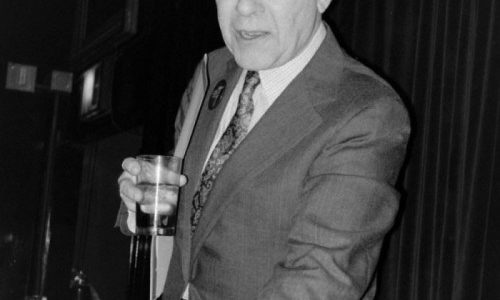
Preserving Jack Taylor
June 6, 2019 | Anthony C. Wood, Archive Project Founder & Chair
Jack Taylor, who died on February 8th, was a preservationist’s preservationist. He was no finger-in-the wind advocate restricting his efforts to battles with a high degree of success. If he passionately felt a site needed to be saved, even if under-appreciated or written off by the preservation establishment, he was willing to take up the cause. No matter how formidable the opposition might be, Jack was undaunted. He fought the good fight, even if it meant battling a politically powerful hospital, a very well-connected developer, a prominent architect, or the Real Estate Board of New York.
Passionately committed to preservation, Jack advanced his efforts with calm determination and dogged persistence. Jack was a true preservation work horse, not a show horse. He could strategically plan a demonstration just as well as he could carry a placard. He could write the testimony for a hearing, and deliver it too. He knew how to build coalitions and mastermind campaigns. He could organize the grassroots, command the attention of citywide preservation organizations, line up expert testimony, secure the support of politicians, obtain supportive editorials, and even deliver a celebrity or two.
Preservationists with a particular geographic focus often fail to appreciate how essential it is to be robustly engaged with larger citywide preservation issues. Not Jack. He understood their importance and was always there when needed. His decades of service on the board of the Historic Districts Council are testimony to his wider vision. He would just as eagerly lead a protest in front of his beloved Lüchow’s as he would walk the picket line in front of Pennsylvania Station opposing misguided proposed changes to the Landmarks Law.
Jack also understood that to do justice to the places he so valued, his involvement had to go beyond the realm of historic preservation. Over the decades, he invested considerable time and energy in planning and zoning issues. He interacted with numerous city agencies. He became involved with multiple groups and varied coalitions. Jack gave generously of his time and resources. It would be daunting to even begin to calculate the number of meetings and hearings that he attended regularly.
Anyone who was privileged enough to labor in the vineyard of historic preservation with Jack Taylor has his or her own cherished memories of him. If you were in a preservation battle, Jack was the preservationist you wanted in the foxhole with you. He was knowledgeable, fun to be with, and probably would have brought along a bottle of Scotch. Those familiar with HDC events can thank Jack for having upgraded those events years ago to feature something with more of a kick than mere white wine. Who among us was not amazed the first time we received a mailing from Jack with a personalized message typed on a 3” by 3” Post-It note? Because Jack refused to migrate to a computer, this was his version of sending an email. Then there was Jack’s copy editing expertise. How much red ink could any one person deploy? As much as the document needed to make it perfect.
Whether a win or a loss, Jack understood the importance of documenting preservation efforts. He knew there was as much to learn from a victory, like saving Ladies’ Mile, as there was from hard-fought defeats such as the demolition of Lüchow’s and the destruction of the Dvořák House. In preservation circles, Jack was known for storing his papers in his shower stall (for the record, he had two bathrooms in his apartment). While he was alive, he worked with the Archive Project to find a permanent home for his Ladies’ Mile, Lüchow’s, and Tammany Hall papers. Appreciating the power of preservation’s history, Jack made provisions in his will for the Archive Project to secure the future of his remaining preservation papers. Jack insured the preservation of the history he made.
Losing Jack is particularly painful because he remained an active presence in our world until the very end. It is hard to imagine life without his Post-It notes arriving in the mail and his raspy voice on the other end of the phone. Jack’s death underscores the painful reality that we are in the process of losing a generation of preservation greats. We can take comfort in the incredible legacy they have left us. From Jack, we inherit fond memories and the beloved buildings and historic districts he helped protect. Equally valuable, he leaves us the model of a preservationist extraordinaire that preservationists young and old can only aspire to emulate. Viva Jack Taylor!